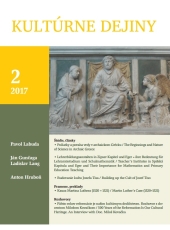Lehrerbildungsanstalten in Zipser Kapitel und Eger – ihre Bedeutung für Lehramtsstudium und Schulmathematik
Teacher’s Institutes in Spišská Kapitula and Eger and Their Importance for Mathematics and Primary Education Teaching
Author(s): Ján Gunčaga, Ladislav LangSubject(s): History
Published by: VERBUM - vydavateľstvo Katolíckej univerzity v Ružomberku
Keywords: Hungary;teacher`s institute;Spišská Kapitula;Eger;Johann Ladislaus Pyrker;village schools;mathematics teaching;András Lesnyánszky;Joseph Weinkopf
Summary/Abstract: The main aim of the paper is to describe educational activities in the Teacher’s Institutes in Spišská Kapitula and Eger in the 19th century. These institutes were the first in contemporary Hungary to provide training for future teachers at primary level. They were founded by Johann Ladislaus Pyrker (1772–1847), bishop of Spiš in 1819–1820 and archbishop of Eger in 1827–1847. The Teacher’s Institute in Spišská Kapitula was established in 1819 and the Teacher’s Institute in Eger was founded in 1828.Another aim of the paper is to characterize mathematics teaching at village schools in Hungary in the 19th century. It seeks to describe the didactical approaches to mathematics teaching of Georgius Pales (1753–1833), András Lesnyánszky (1795–1859) and Joseph Weinkopf (1787–1873). The results of their didactical work are very inspiring even today.In the paper we describe educational activities at the Teacher’s Institutes in Spišská Kapitula and Eger in the 19th century. They were the first teacher’s institutes in contemporary Hungary to produce village teachers for primary level. Both institutes were established by Johann Ladislaus Pyrker (1772–1847), who was active in educational matters wherever he served as bishop (Spišská Kapitula, Venice, Eger). These institutes are an excellent example of SlovakHungarian cultural and educational relations.The second aim of the paper was to characterize mathematics teaching at the village schools in Hungary in the 19th century. It sought to describe the didactical approaches to mathematics teaching of Georgius Pales (1753–1833), András Lesnyánszky (1795–1859) and Joseph Weinkopf (1787–1873). As they used a lot of interesting models for mathematics teaching, their didactical work is very inspiring even today. Digitisation of historical sources in archives and historical libraries allows the research on historical mathematical textbooks as well as interdisciplinary and international research.
Journal: Kultúrne dejiny
- Issue Year: 8/2017
- Issue No: 2
- Page Range: 200-212
- Page Count: 13
- Language: German

